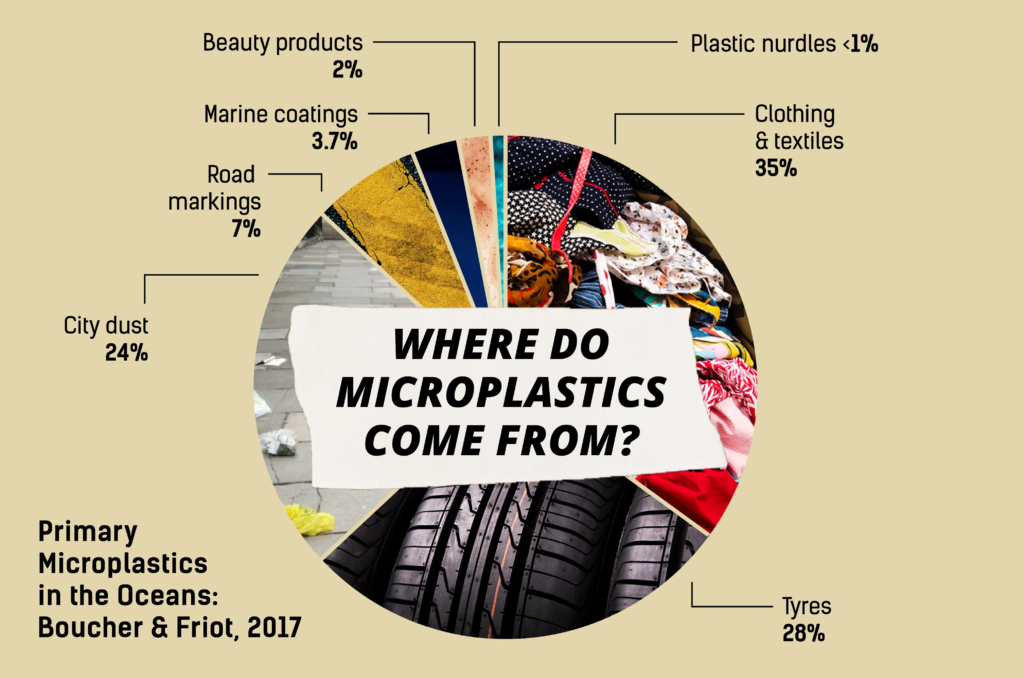Fast fashion is used to describe cheap, trendy clothing that is very quickly coming in and out of style. For Earth Day, it’s time to look at how fast fashion is destroying the planet and what we can do to stop it.
Textile waste makes up for around 13 million tons a year, and this problem isn’t going anyway anytime soon. Also, about 95% of this waste can be reused or recycled. The fashion industry is one of the most polluting in the world.
Fast fashion is used to describe cheap, trendy clothing that is very quickly coming in and out of style. Most clothing companies feed into this by offering new styles multiple times a week. As consumers, we can’t change an entire industry, but we can do our part to educate ourselves on this serious issue. For Earth Day, it’s time to look at how fast fashion is destroying the planet and what we can do to stop it.
Buying something brand new is addictive. The media-saturated society we live in makes it extremely difficult to not feel the pressure to keep up with the latest fashion trends. Each season brings forth a new wave of stylish trends to our social media pages. This increase in supply from clothing companies has led to the term we all know as fast fashion. These clothes are always cheap and meant to feel disposable when a new trend comes around.
Clothing companies like Shein and Romwe sell this specific type of clothing. It’s obvious the material is in-expensive and unethically made, yet we buy them because they’re convenient and easy on the wallet. It doesn’t even matter if you have good intentions buying from these retailers, the clothes are so cheaply made that they can only be worn a few times before being thrown out.
Although these are the stereotypical online brands we associate with fast fashion, there are others out there that dominate the young adult clothing market. Forever 21, Zara and H&M are the biggest culprits when it comes to the fast fashion industry. They often try to disguise their wrongdoings with artsy photographs and sub-par promises of becoming a more sustainable company without any results. Even if they have started initiatives to help combat their textile waste and the climate crisis, their programs are often vague, leaving out important information.
I’d be lying if I said I’d never purchased anything from these brands before; most of us would be. I’ve bought at least one thing from each of these retailers because, for the most part, they’re convenient and budget-friendly.
The Numbers
On average, clothes can only be worn seven times before we get rid of them. That number means there’s plenty of room for companies to manipulate you into buying more clothes than you really need. Taking a look at the fashion industry can give a better idea of just how much clothing is being wasted every year.
Thrift stores are a great way to get rid of your old clothes to make room for new ones, but less than 30% of the world’s clothes are donated. The United States alone exports more than a billion pounds of used clothing every year. This breakneck pace of discarding clothing isn’t normal or healthy for the planet.
The clothes that aren’t able to be donated are dumped into landfills, where it takes decades to break down since they’re full of plastics. Sitting in a landfill, these clothes also emit greenhouse gases, which accounts for 10% of the world’s total. The majority of clothing companies will burn their unsold clothes, and around 15% of their textiles end up directly in the trash without even trying to reuse them.
Harmful Ways Fast Fashion Kills the Planet
It’s not just textile waste that does the most damage in the fast fashion industry. There are even harmful ways fashion destroys the planet that most don’t even realize, the first being plastic.
By far, the most popular material clothes are made from is polyester, which is a synthetic fibre derived from coal, air, water and petroleum. Polyester is very cheap to make and takes much more time to decompose. If we’re this up-in-arms about banning plastic straws, we should feel the same about synthetic fibres in clothing.

Even by washing these types of fabrics, we’re polluting the environment with tiny microplastics. It’s estimated that each year, we expel half a billion tons of microfibres. These microplastics can get into our drinking water and even into the food we eat.
Water waste is another big issue for both clothing producers and consumers. Not only does washing your clothes account for more waste than necessary, the amount of water it takes to create clothing during the production process is absurd. The fashion industry produces around 20% of the world’s water waste, which is only going to grow into a larger problem.
Looking for clothing made up of more natural fibres and reducing how often you wash your clothes can make a significant impact on your own carbon footprint.
Look Towards the Future
Thinking long term every time you see a cute pair of jeans pop up on your Instagram timeline can help with the urge to buy. On average, consumers only wear an article of clothing seven times before it’s thrown away. Next time you head to the checkout, ask yourself whether or not you’ll wear that item at least 30 times. If the answer is no, save yourself some money and don’t buy it.
If you still have that urge to buy something new, there are sustainable and ethically-conscious brands that make high-quality clothing. Surprising, I know! A few of my favourites are Kotn, Boden, and People Tree.
Thrifting is another great way to switch up your wardrobe without breaking the bank. It’s super fun to spend a day hitting up thrift stores in your area. There are even thrifting apps available like Poshmark, Depop and Thredup that help you search for exactly what you’re looking for if you don’t exactly enjoy the thrill of the hunt.
Sell, Donate or Upcycle
There are seven billion people in the world, one of them is bound to enjoy your clothes. Selling might not be the easiest way to get rid of your old clothes, but it is the only way that earns you a bit of cash back. Donating is another super-easy way to help your clothes find another home.
Upcycling is more uncommon than selling or donating your clothes, but it’s the best way to get full use out of them. For example, using an old t-shirt can make for cleaning rags. Pinterest has a tone of creative ways to help give your old clothes a new lease on life.

No one is perfect, and there is a long way to go before the fashion industry can turn itself around. The industry is all about supply and demand. If more people became aware of how harmful fast fashion can be, the less profit these companies would make and the more they would realize they can also play a part in helping protect this planet.

